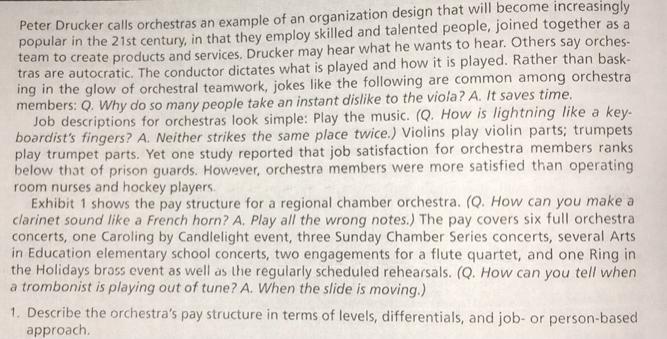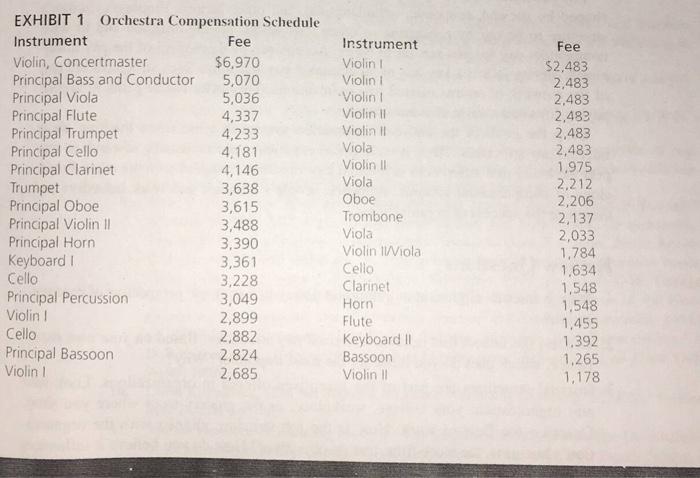Question
Discuss what factors may explain the structure. Why does the violinist receive more than the oboist and trombonist? Why does the principal trumpet player earn

Discuss what factors may explain the structure. Why does the violinist receive more than the oboist and trombonist? Why does the principal trumpet player earn more than the principal cellist and principal clarinetist but less than the principal viola and principal flute-players? What explains these differences? Does the relative supply versus the demand for violinists compare to the supply versus the demand for trombonists? Is it that violins play more notes?
What is the pay differential between the principal viola and the next highest-paid viola? What about between the principal trumpet and the next highest-paid trumpet? Why are these differentials between the principal and others? Why aren’t they larger? Smaller? Why is the differential between trumpet players different than between the viola players?
How well do equity and tournament models apply? Do custom and tradition play any role? What about institutional theory?
Peter Drucker calls orchestras an example of an organization design that will become increasingly popular in the 21st century, in that they employ skilled and talented people, joined together as a team to create products and services. Drucker may hear what he wants to hear. Others say orches- tras are autocratic. The conductor dictates what is played and how it is played. Rather than bask- ing in the glow of orchestral teamwork, jokes like the following are common among orchestra members: Q. Why do so many people take an instant dislike to the viola? A. It saves time. Job descriptions for orchestras look simple: Play the music. (Q. How is lightning like a key- boardist's fingers? A. Neither strikes the same place twice.) Violins play violin parts; trumpets play trumpet parts. Yet one study reported that job satisfaction for orchestra members ranks below that of prison guards. However, orchestra members were more satisfied than operating room nurses and hockey players. Exhibit 1 shows the pay structure for a regional chamber orchestra. (Q. How can you make a clarinet sound like a French horn? A, Play all the wrong notes.) The pay covers six full orchestra concerts, one Caroling by Candlelight event, three Sunday Chamber Series concerts, several Arts in Education elementary school concerts, two engagements for a flute quartet, and one Ring in the Holidays bross event as well as the regularly scheduled rehearsals. (Q. How can you tell when a trombonist is playing out of tune? A. When the slide is moving.) 1. Describe the orchestra's pay structure in terms of levels, differentials, and job- or person-based approach.
Step by Step Solution
3.26 Rating (155 Votes )
There are 3 Steps involved in it
Step: 1
Answer 1Answer PAY STRUCTURE iThe pay structure of orchestra is considered to be structured in a hierarchical manner The fee for each position varies according to the level starting from bottom positi...
Get Instant Access to Expert-Tailored Solutions
See step-by-step solutions with expert insights and AI powered tools for academic success
Step: 2

Step: 3

Ace Your Homework with AI
Get the answers you need in no time with our AI-driven, step-by-step assistance
Get Started


